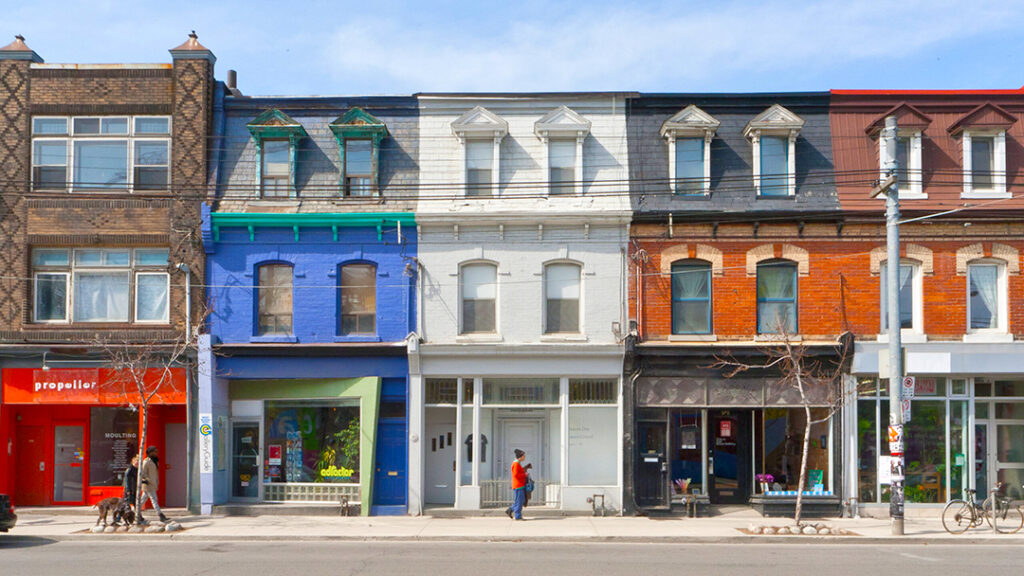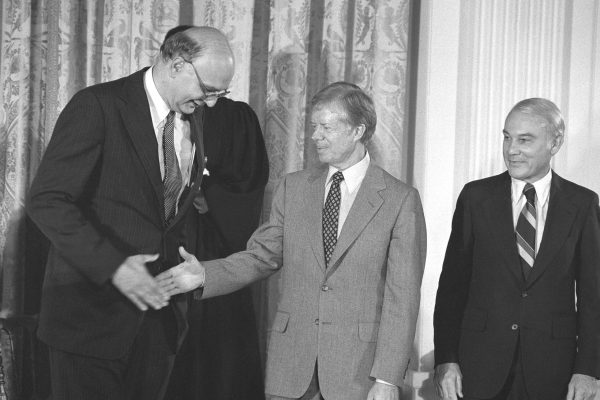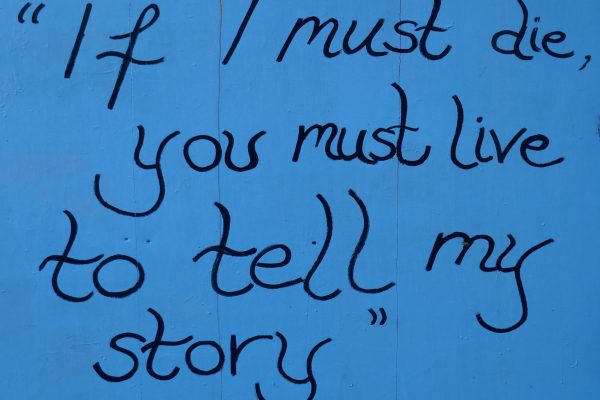The COVID-19 pandemic has exposed the fragility of the U.S. housing system—a system that prioritizes private profit above all else. In December 2020 an estimated 10 million renters and millions more homeowners could not make their housing payments. Local and federal governments, acting against the wishes of real estate interests, stalled a tsunami of evictions and foreclosures by creating eviction moratoria and mortgage forbearance options. Rents descended from the stratosphere in places such as New York City, until landlords began to withhold units from the market in hopes that rents would rise again in the near future. The recovery period will undoubtedly last a long time; renters are still responsible for back rent owed, which was an estimated average of $5,600 in January.
Before the start of the pandemic, though, the United States was already in a nation-wide housing crisis. A full-time worker earning minimum wage could not afford an average two-bedroom apartment in any state in the country. Nearly 50 percent of all renters spent at least one-third of their income on rent, while 25 percent of renters gave over one-half of their paychecks to their landlords. In 2016 landlords filed over 2.3 million evictions in courts across the country. Meanwhile, over 17 million homeowners lived in unaffordable housing, and the disparity in the homeownership rate between Black and white people was over 30 points.
Indeed, the U.S. housing system—highly privatized, expensive, and risky—was cooked in the fires of racism and touches every corner of our society and economy. There is hardly an important social issue that can be separated from inequities in access to affordable, quality housing. Yet the bulk of the proposals in the American Jobs Plan, for example, mostly mirror earlier policies to stimulate ownership and new construction of affordable housing through subsidies and tax-breaks for private developers. These mechanisms have not only contributed to our problems, but failed African Americans. For the last several decades in the United States, the highly regressive policy of tax breaks for mortgage interest, for example, has encouraged greater household indebtedness while deeply disadvantaging African Americans. Even after the end of official redlining, government programs to promote Black homeownership created perverse incentives for real estate interests and banks to exploit Black homeowners and gain from their economic distress in what Keeanga-Yamahtta Taylor has called “predatory inclusion.” As she put it, “the real estate industry wielded the magical ability to transform race into profit with the racially bifurcated housing market.”
We need to be more imaginative if we are to truly address the structural issues in housing—the public sector must be resourced and active, and deliberately take a direct stake in the economy. This will require experimenting with different forms of ownership, unwinding decades of entanglement between real estate interests and local governments, and undoing the racism at the heart of housing provision in this country. It will require imagining different federal institutions that are able to transition to a housing system where a significant portion of housing provision happens outside of the market. And it will require recognizing housing as a social good. This calls on us, in other words, to think about how to transition to social housing. When we focus on solely the economic value of housing, we see housing as a vehicle for individual wealth creation. But, if we instead focus on the social value of housing, we can see that it is the linchpin of human flourishing and community stability.
Before the 1930s the United States had little housing policy of which to speak. The New Deal fundamentally reshaped the housing market, as the government began to actively protect homeowners and incentivize homeownership. The government created the Federal Housing Authority (FHA) to insure mortgages, standardize lending terms, lower down payments and interest rates, and extend repayment periods. Moreover, the Homeowners Loan Corporation (HOLC) stepped in to relieve distressed homeowners who had fallen behind, refinancing more than a million mortgages on favorable terms. Along with this new role, the FHA created mortgage underwriting guidelines that institutionalized accounting for neighborhood characteristics. From the very start of U.S. housing policy, neighborhoods of color were deemed too “risky” to receive home financing, which effectively limited access to mortgages only to white homeowners—this would become known as “redlining.” The FHA’s own publications advanced segregationist views and provided model deeds for restrictive covenants to prevent re-sale to people of color.
In subsequent years the federal government would continue to intervene in the housing market, inventing new agencies (such as Fannie Mae in 1938 to shore up the secondary mortgage market), new provisions (such as the VA loan program of 1944), and the continued liberalization of mortgages (such as extending terms to thirty years and increasing loan-to-value limits to 95 percent in 1956). With the federal government both assuring liquidity and insuring mortgages, real estate lending became a guaranteed source of profit for private banks who were happy to continue to extend loans.
By 1980 the United States had become a nation of homeowners—64 percent of households owned their homes—but it had also become a nation of highly indebted homeowners. In 1979 total mortgage debt equaled 46 percent of total household income, a figure that would rise to 73 percent by 2001. During this time racist dynamics continued to dominate the housing market—not only did government policies benefit white people at the expense of people of color, but the growing housing market also created incentives for segregated neighborhoods. This all but ensured that African Americans would own homes in segregated neighborhoods, have risky mortgages, and face volatile neighborhood markets. In the 2008 crash, Black Americans had half of their family wealth wiped out. Indeed, unequal access to homeownership is the key factor in the ten-fold difference in household wealth between white and Black households.
Real estate interests lobbied to restrict public housing to only those with the lowest incomes, fearing that government involvement in middle-class housing would compete with their own profits. Most public housing built by the Public Works Administration (PWA) was segregated, as was the public housing built under Truman’s 1949 Housing Act. As white people moved to the suburbs in the following decades and cities began to suffer, underfunded public housing became a symbol for the inherent pathologies of government works and urban life—and an intensely racialized symbol at that.
Beginning in the 1970s, the United States started to explicitly shift away from public housing support, physically destroying units through its HOPE VI program; privatizing others; and, under President Clinton, legislating against a net increase in public housing units (the Faircloth Amendment). Housing assistance became more focused on vouchers (so-called Section 8) for low-income tenants, and tax credits for developers (Low Income Housing Tax Credit, LIHTC). Yet voucher programs, even if someone manages to get to the top of the long waiting lists, are usually insufficient and recipients often face discrimination and poor conditions. Though tax credits have generated low-income housing, there is still no guarantee that units will remain affordable after the mandatory fifteen-year period. Moreover, the program is too vulnerable to shifting economic conditions. These market-oriented programs are fundamentally costly to public coffers and, at their foundation, prioritize profit over public function. In writing about low-income housing tax credits, writer Alyssa Katz described the program as “a better-than-nothing gimmick that helps the poor by rewarding the rich.”
In the United States, housing is first and foremost a commodity. It is something to be bought and sold, the private market determining its economic value.
Yet housing is an unusual kind of commodity. On the one hand, even when it is privately owned, it maintains undeniable public functions and interdependencies. Houses anchor people to particular places, forming the foundation for community, human connection, and solidarity. When housing starts to break down, that collapse undermines these social fabrics; housing is enmeshed in a web of social relations. The economic value we assign to housing depends on its surrounding world—its proximity to different amenities, such as places to work, relax, eat, socialize, shop, engage with the arts, etc. However, on the other hand, housing is not a “public good” in economists’ definition of the term (“non-excludable” and “non-rivalrous”). Even fully public housing—unlike a lighthouse, road, or commons—is always defined by someone else not using it.
In addition to being both publicly and privately constituted, housing serves a crucial role in social reproduction. Shelter, next to food, water, and clothing, is one of the most basic human needs. Mid-century economic historian, Karl Polanyi, famously pointed to a category of things, such as land and labor, that were not produced to be commodities, but have, nonetheless, been naturalized as commodities—what he called “fictitious commodities.” Contemporary scholars of Polanyi, Margaret Somers and Fred Block, warn that, “When these public goods and social necessities (what Polanyi calls “fictitious commodities”) are treated as if they are commodities produced for sale on the market, rather than protected rights, our social world is endangered and major crises will ensue.” The “commodification” of housing is the supplanting of these social and use values by pure economic value.
Polanyi, Catherine Bauer, and other scholars suggest that commodification is not only a social arrangement, but also a matter of degree. It is not that housing is or is not commodified, but that institutional arrangements vary in their recognition of property rights when it comes to housing. Regulations on housing quality, limits on pricing, and codification of rights of tenants all put limits on property rights and erode the commodity value of housing. Bauer once described the “failure of civilization,” as the moment when “the Social Contract became largely a code of noninterference with property rights.”
So, what is housing and how should we conceptualize it? We think of housing as a “social good”—something central to social reproduction, stuck between private and public, whose value is embedded in the world around it. Others have thought of housing as “infrastructure” or a “utility,” primarily functioning in service to the economy. But there are also ways of thinking of housing in other-than-economic terms, even within market economies. Architects of the Welfare State famously imagined housing as a “pillar” of welfare (albeit an increasingly “wobbly one” in the era of neoliberalism). Heterodox economists in Europe today speak of societal foundations. “Social housing” projects—such as community land trusts, tenant cooperatives, mission-driven non-profits, and well-functioning public housing—all reduce the extent to which the private market determines the price of housing and access to it.
There are significant examples in the United States that show the range of housing possibilities. During the early civil rights era, activists searching for new modes of tenure for Black land ownership founded projects such as New Communities Inc (credited as the first Community Land Trust in the United States) in Albany, Georgia, and Fannie Lou Hamer’s cooperative Freedom Farms in the Mississippi Delta. Larger scale Community Land Trusts have grown in places such as Burlington, Vermont and Dudley Street, Boston. Limited equity cooperatives proliferated in the Bronx and Washington, D.C., and resident-owned communities have created secure tenure for manufactured homes communities in North Adams, MA.
Social housing works because it aligns the interests of residents with those of the collective. In contrast, private rental housing pits landlords against tenants in fights over costs and maintenance. Social housing residents are better able to faces crises, as they share interests, are in similar positions, and can pool resources. The evidence is clear: evictions are much lower in social housing communities and these housing models weathered the last housing crisis much better than the private market.
It is important to build institutional designs that insulate housing from the market, but social housing must also work to rebuild our connection to our communities and address inequality. As Erik Olin Wright put it, to add “social” as an adjective foregrounds “social empowerment dimensions.” Social housing requires imagining a kind of housing whose production, distribution, and management is guided by deeply democratic principles, a logic of intentional inclusion, and an ethos of care and environmental stewardship. For this reason, while social housing needs to be publicly backed to function at scale, it also has an indispensable bottom-up element that renders it incompatible with exclusively top-down statist directives.
Today social housing models increasingly serve people of color, working against racial capitalism and its patterns of harm. As Jessica Gordon Nembhard notes, though there is a long history of black cooperative economics, this remains “a hidden history.” The Black Panther Party Ten-Point Program called for private housing and land to be converted into cooperatives to build “decent housing” backed by government aid. There is growing interest in alternative ownership models of Black commons and shared ownership, such as the history of the subsistence “plot” on the side of the plantation or Seneca Village, a Black, multi-racial, and community-controlled housing experiment in upper Manhattan that was razed for Central Park’s development in the 1850s.
Local needs and histories will, of course, inform different experiences of social housing. Indeed, social housing can—and should—take diverse forms, fulfilling an ethos of what Charles Sable has called “democratic experimentalism.” Uruguay is home to one of the most successful and fully de-commodified housing experiments in the world, FUCVAM, with 90,000 residents and fifty years of experience. Spokespeople from FUCVAM caution against what they see as attempts to replicate their institutions, “copying a model created in other realities and conditions.”
This raises a significant question: How do we create social housing in a capitalist society? We do not have the ability to instantly remove speculation from the housing market. Two-thirds of U.S. households are private homeowners, and the vast majority of rental housing is owned by private landlords charging market-rate rents. Real estate plays an outsized role in the United States, touching almost every sphere from our politics to our pensions. The idea that housing can only be a commodity, and that public alternatives “simply don’t work,” is reinforced nearly everywhere.
We do not mean to underestimate this ideological battle. However, we believe it is imperative to provide quality, stable, and affordable housing to many people, the material reality of which will convince more people of the benefits of social housing. To do so, we must incrementally expand the supply of social housing while crowding out the power of speculators. Simultaneously increasing social rights over private housing, such as through increased protections for tenants and effective rent controls, will pave the way for regulation of the real estate industry as a provider of a social good, akin to the regulation of private colleges or private health care providers. Of paramount importance, too, is limiting the influence of real estate over the political process. Untangling real estate values from funding formulas for local schools will limit speculation on housing, as will finding alternative methods for families to accrue wealth across generations aside from real estate. The first step is expanding the supply of social housing: building new public housing, upgrading existing housing, and transferring housing out of the speculative market. Each of these steps will require a different set of policies.
Regarding housing construction, one of the most prominent proposals today is known as the Homes Guarantee. It calls for the creation of 12 million new units of social housing, including 600,000 units of permanent supportive housing, over the course of ten years. The proposal also foregrounds decarbonization and explicitly emphasizes undoing past racist housing practices. The demand has been endorsed by many public officials across the country, with a version introduced by Congresswoman Ilhan Omar.
Looming over the question of social housing in the United States is the legacy of public housing and the fate of the 2 million residents who live in it. While the failures of public housing can be traced to early sabotage, chronic underfunding, and segregationist logic, it nonetheless lives in the minds of many as a decisive example of the government’s inability to take a role in housing—or anywhere in the economy. Thus, a social housing policy must get public housing back on track, both for the lives of the residents themselves and to show that social housing is possible. The recent Green New Deal for Public Housing Act, introduced by Senator Bernie Sanders and Representative Alexandria Ocasio-Cortez, addresses some of the main issues of public housing. The bill calls for an investment of up to $172 billion to upgrade and retrofit public housing facilities, an attempt to improve residents’ quality of life, create jobs, and address the large volume of carbon emissions from housing. It also establishes new resident councils, which would create elected bodies of tenants to oversee management of the communities.
To transfer housing out of the private housing market, we have proposed the creation of a new federal government agency, the Social Housing Development Authority (SHDA). The SHDA would proactively acquire distressed real estate, rehabilitate it to livability and environmental standards, and then transfer it to the social housing sector. In other words, it would intervene in the troubled parts of the housing market and, rather than let those units go to corporate speculators and house-flippers, finance their transfer to tenant cooperatives, land trusts, and non-profits. This would crowd out speculators and expand the share of housing shielded from the private market. While the undertaking might appear complicated, there is plenty of precedent for the components, from public take-overs of troubled property, to tenant rights to purchase, to public financing of cooperative enterprises. The scale of this undertaking, however, is unprecedented—this does not render it impossible.
In addition to start-up funds provided by initial Congressional appropriation, the SHDA would be subsequently financed with an account at the Treasury, modeled after the BUILD Act of 2018. It would replenish its resources by providing low-cost financing to social housing providers who acquire the properties. Local or regional offices of the SHDA would carry out day-to-day operations, allowing them to work closely with communities to identify priorities. The SHDA would be governed by a board with substantial representation by tenants and housing advocates. It would also be able to acquire commercial office space and hotel real estate—two industries whose futures have been made uncertain by the pandemic—and convert them to residential property.
Social movement activism will be necessary to realize such an institution, but that is only the beginning. Existing housing justice organizations, community development groups, and others would have a new target in the SHDA for campaigns to fulfill their missions. Movements, of course, would be central in organizing efforts of new cooperatives. The struggle for housing justice is exciting because it is an inherently intersectional struggle. As with the Green New Deal for Public Housing, advocates for social housing development will have to include unions, tenant movements, and movements for racial and social justice. But the struggle today—for example, around Community Land Trusts—also includes a middle-income constituency that sees in social housing a viable and attractive alternative to homeownership.
While there has been a longstanding need for an agency to acquire housing for social purposes, the COVID-19 pandemic has revealed the urgency. The pandemic has highlighted the instability of landlords, with many going into financial distress and at risk of foreclosure or selling to investors. Private equity investors are reportedly sitting on $300 billion in “dry powder” for deployment in real estate, for what has been described as the “greatest buying opportunity of the century.” But the distress to the speculation pipeline existed before the pandemic. For example, 14 percent of Milwaukee’s rental units are now owned by out-of-state landlords, a 300 percent increase since 2000.
The political economy of housing is significant because it is the political economy of the country. It stitches together the livelihoods and basic needs of families, yet is currently driven by the incentive of maximizing profits. We can see the overlapping and conflicting motivations of various actors—households, communities, property owners, banks, construction workers, politicians, Wall Street, and many others—all fixated on the future of this single commodity. Social housing shows the possibilities of a political economy that prioritizes social goods and redirects power not to capital or the state, but to communities and their needs.
People are beginning to question whether the private market is the most efficient way of organizing the production and distribution of basic necessities, such as education, healthcare, and housing. The recent proposals from Washington, D.C., signal a renewed openness to public intervention. Even if the pandemic has not brought the “end of our romance with market society and hyper-individualism,” as sociologist Eric Klinenberg writes, it is clear that the romance has at least soured. The time to act is now. The question is whether we will use this opportunity to redress more than a century of wrongs and the fundamental problems in our housing provision, or if we will continue to expand institutions that we know have failed to meet the needs of our communities.






